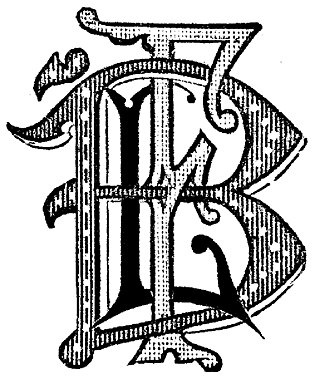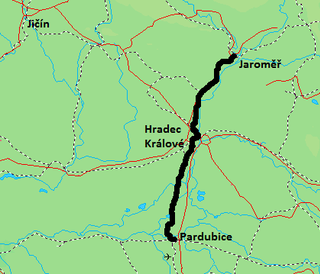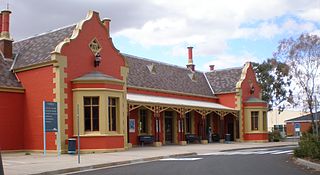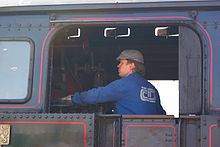
Rail transport is a means of transport using wheeled vehicles running in tracks, which usually consist of two parallel steel rails. Rail transport is one of the two primary means of land transport, next to road transport. It is used for about 8% of passenger and freight transport globally, thanks to its energy efficiency and potentially high speed.

A conductor or guard is a train crew member responsible for operational and safety duties that do not involve actual operation of the train/locomotive. The conductor title is most common in North American railway operations, but the role is common worldwide under various job titles. In Commonwealth English, a conductor is also known as guard or train manager.

A tender or coal-car is a special rail vehicle hauled by a steam locomotive containing its fuel and water. Steam locomotives consume large quantities of water compared to the quantity of fuel, so their tenders are necessary to keep them running over long distances. A locomotive that pulls a tender is called a tender locomotive. Locomotives that do not have tenders and carry all their fuel and water on board the locomotive itself are called tank locomotives or tank engines.

A 2-8-8-4 steam locomotive, under the Whyte notation, has two leading wheels, two sets of eight driving wheels, and a four-wheel trailing truck. The type was generally named the Yellowstone, a name given it by the first owner, the Northern Pacific Railway, whose lines ran near Yellowstone National Park. Seventy-two Yellowstone-type locomotives were built for four U.S. railroads.
Rail transport terms are a form of technical terminology applied to railways. Although many terms are uniform across different nations and companies, they are by no means universal, with differences often originating from parallel development of rail transport systems in different parts of the world, and in the national origins of the engineers and managers who built the inaugural rail infrastructure. An example is the term railroad, used in North America, and railway, generally used in English-speaking countries outside North America and by the International Union of Railways. In English-speaking countries outside the United Kingdom, a mixture of US and UK terms may exist.

A train simulator is a computer based simulation of rail transport operations. They are generally large complicated software packages modeling a 3D virtual reality world implemented both as commercial trainers, and consumer computer game software with 'play modes' which lets the user interact by stepping inside the virtual world. Because of the near view modeling, often at speed, train simulator software is generally far more complicated software to write and implement than flight simulator programs.

The Brotherhood of Locomotive Firemen and Enginemen was a North American railroad fraternal benefit society and trade union in the 19th and 20th centuries. The organization began in 1873 as the Brotherhood of Locomotive Firemen, a mutual benefit society for workers employed as firemen for steam locomotives, before expanding its name in 1907 in acknowledgement that many of its members had been promoted to the job of railroad engineer. Gradually taking on the functions of a trade union over time, in 1969 the B of LF&E merged with three other railway labor organizations to form the United Transportation Union.

A motorman is a person who operates a tram (streetcar), light rail, or rapid transit train. A motorman is in charge of operating their train, applying power to traction motors, in the same sense as a railroad engineer is in charge of the engine.

The Great Train Wreck of 1918 occurred on July 9, 1918, in Nashville, Tennessee, United States. Two passenger trains, operated by the Nashville, Chattanooga and St. Louis Railway ("NC&StL"), collided head-on, costing at least 101 lives and injuring an additional 171. It is considered the worst rail accident in U.S. history, though estimates of the death toll of this accident overlap with that of the Malbone Street Wreck in Brooklyn, New York, the same year.

A fireman, stoker or boilerman, is a person whose occupation it is to tend the fire for the running of a boiler, heating a building, or powering a steam engine. Much of the job is hard physical labor, such as shoveling fuel, typically coal, into the boiler's firebox. On steam locomotives the title fireman is usually used, while on steamships and stationary steam engines, such as those driving saw mills, the title is usually stoker. The German word Heizer is equivalent and in Dutch the word stoker is mostly used too. The United States Navy referred to them as watertenders.

A Ticket to Tomahawk is a 1950 American Western film directed by Richard Sale and starring Dan Dailey and Anne Baxter. It was released by 20th Century Fox. Marilyn Monroe appeared in one of her earliest roles.

A motive power depot (MPD) or locomotive depot, or traction maintenance depot (TMD), is where locomotives are usually housed, repaired and maintained. They were originally known as "running sheds", "engine sheds" or just "sheds". Facilities are provided for refuelling and the replenishing of water, lubricating oil and grease and, for steam engines, the disposal of ash. There are often workshops for day-to-day repairs and maintenance, but locomotive building and major overhauls are usually carried out at locomotive works.

The Stéblová train disaster was a railway accident that occurred on 14 November 1960 at 17:42 CET on a single-track railway in Stéblová in Eastern Bohemia, Czechoslovakia. At 17:42 CET, a passenger steam train 608 traveling at a speed of 55 km/h collided with a diesel railcar 653 traveling at a speed of 60 km/h. 118 people died as a result of the accident and 110 were badly injured. It remains the deadliest accident in the history of Czech railway transport.

A brakeman is a rail transport worker whose original job was to assist the braking of a train by applying brakes on individual wagons. The advent of through brakes, brakes on every wagon which could be controlled by the driver, made this role redundant, although the name lives on, for example, in the United States where brakemen carry out a variety of functions both on the track and within trains.

Bathurst railway station is a heritage-listed railway station at Havannah Street, Bathurst, Bathurst Region, New South Wales, Australia. It is situated on the Main Western line and serves the city of Bathurst. It was added to the New South Wales State Heritage Register on 2 April 1999.
Steele v. Louisville & Nashville Railway Co., 323 U.S. 192 (1944), is a United States Supreme Court case, concerning U.S. labor law, specifically, the responsibility of every formally recognized labor organization to equally represent all the members of their class or craft, under the Fair Labor Standards Act (FLSA). In particular, the Court ruled that the Act covered employees regardless of whether any particular individual(s) are, or are not, members of the duly recognized labor organization labor unions.

On the night of Wednesday, June 21, 1905, the New York Central Railroad's flagship passenger train, the 20th Century Limited, derailed in Mentor, Ohio, on the Lake Shore and Michigan Southern Railway line, killing 21 passengers and injuring more than 25 others on board. A switch from the mainline to a freight siding was open, causing the Limited to leave the mainline and overrun the siding at high speed. The cause of the accident was never officially determined, but overwhelming evidence points to an act of rail sabotage. The 20th Century Limited connected New York City to Chicago; its running time had just weeks earlier been reduced from 20 hours to 18.



















